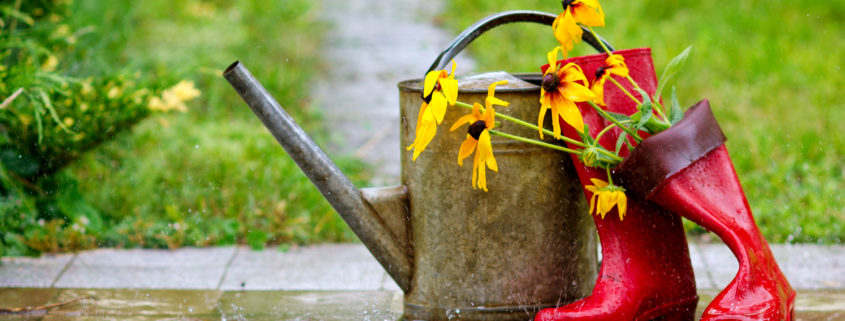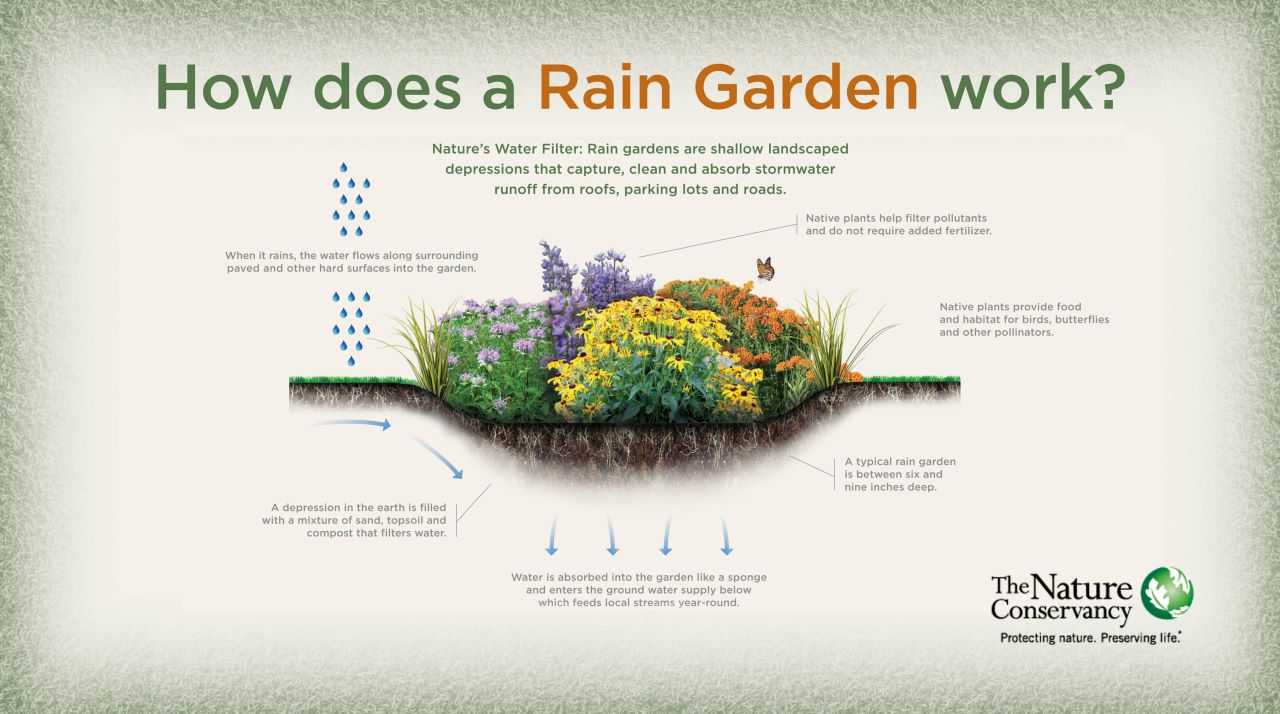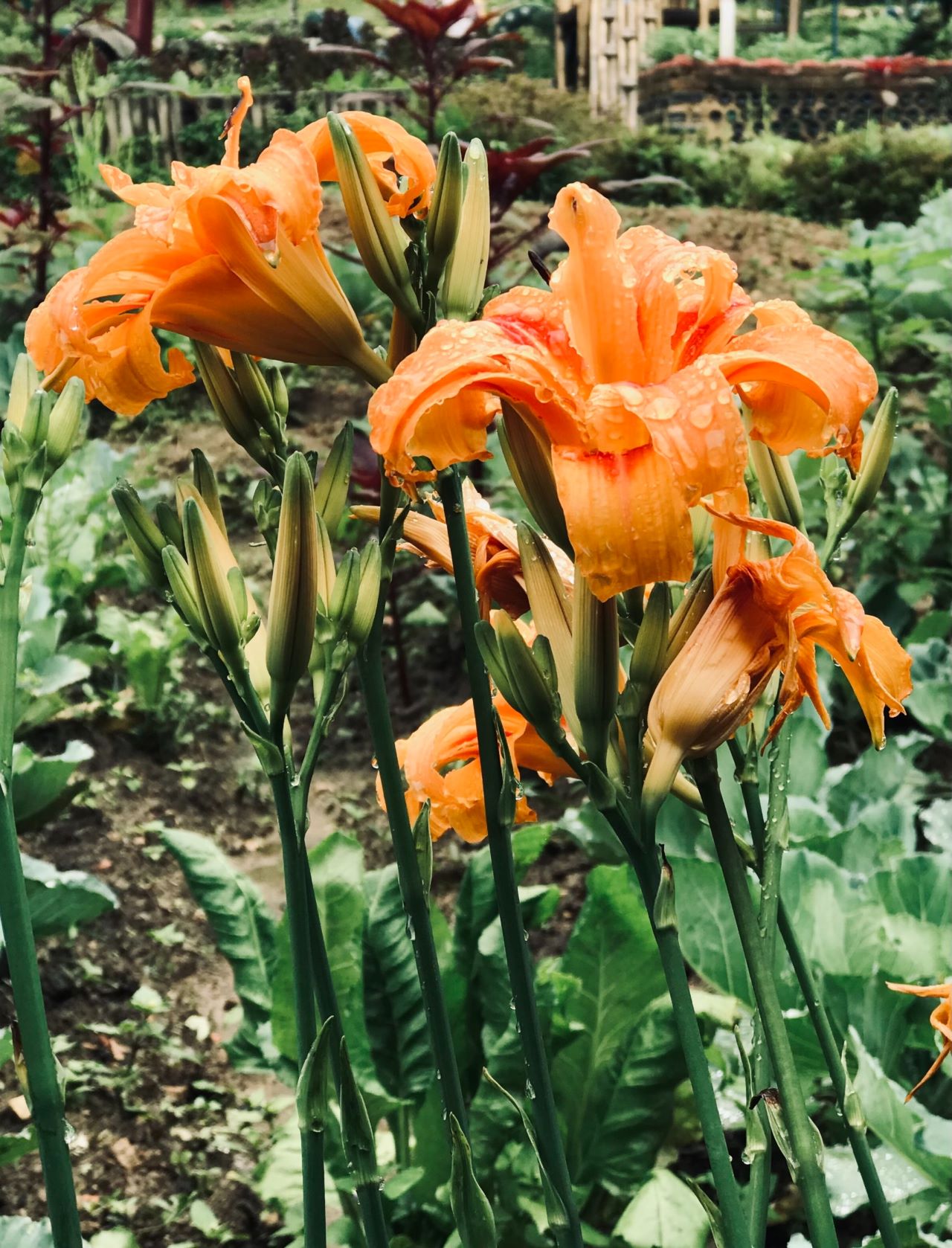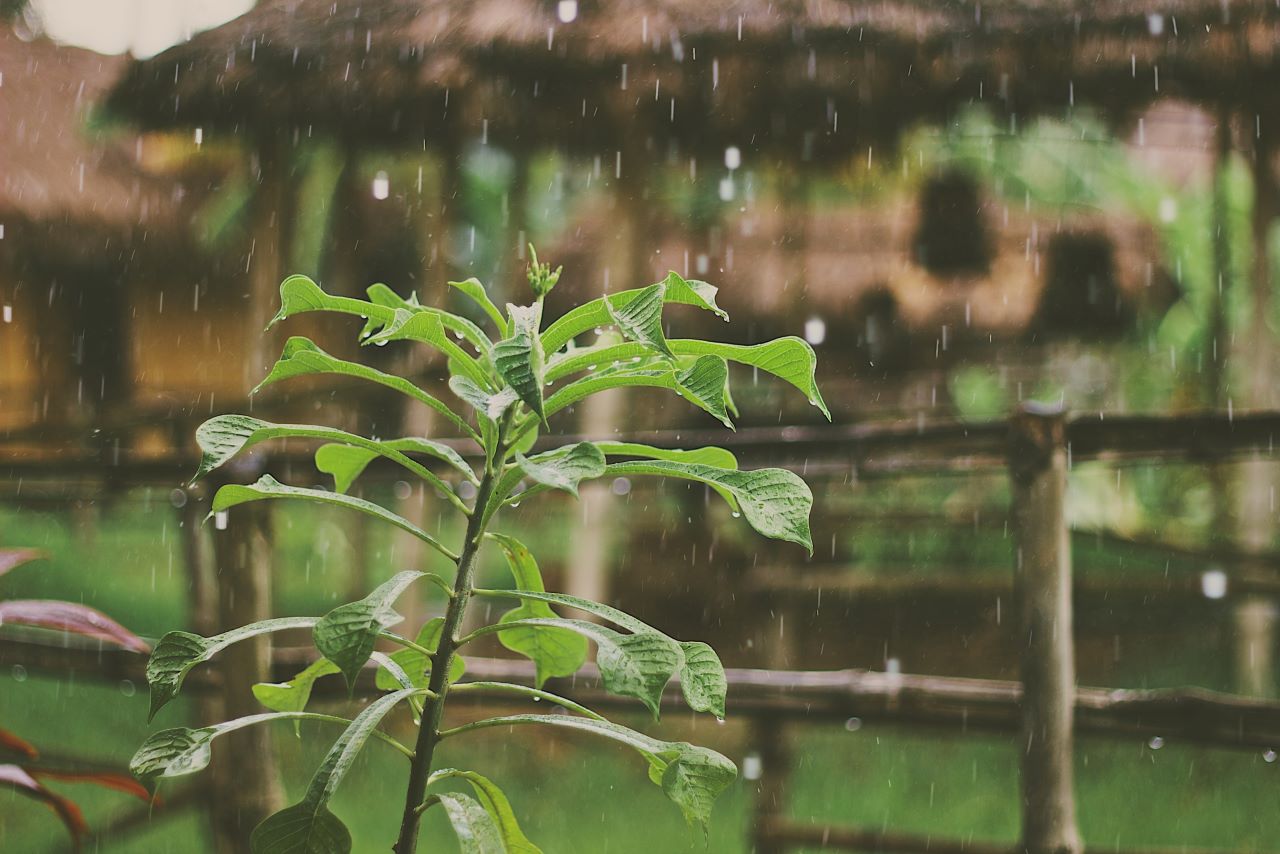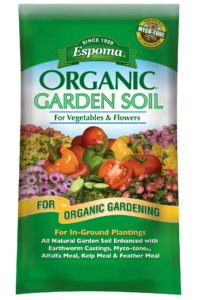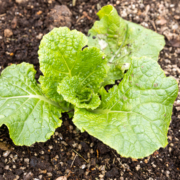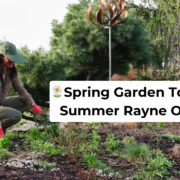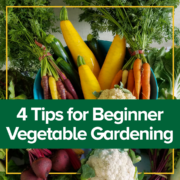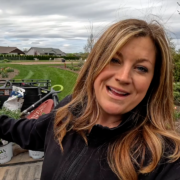Rain, Rain, Come My Way
April showers bring May flowers. The old saying is true. April is full of rain, but there’s no reason you can’t have flowers before May.
During rainstorms, water gushes out of downspouts, across lawns and gardens. It has a tendency to accumulate in one place and can overwater or even flood a garden. Excessive rain saturates soil, suffocates roots, breaks plants and attracts pests.
However, when you’ve strategically planted for rain, gushing downspouts are no longer a problem. A rain garden is a garden that uses water-loving plants, with strong roots. It helps use rain where it lands instead of letting it run-off into streams, lakes and rivers.
5 Steps for Building a Rain Garden
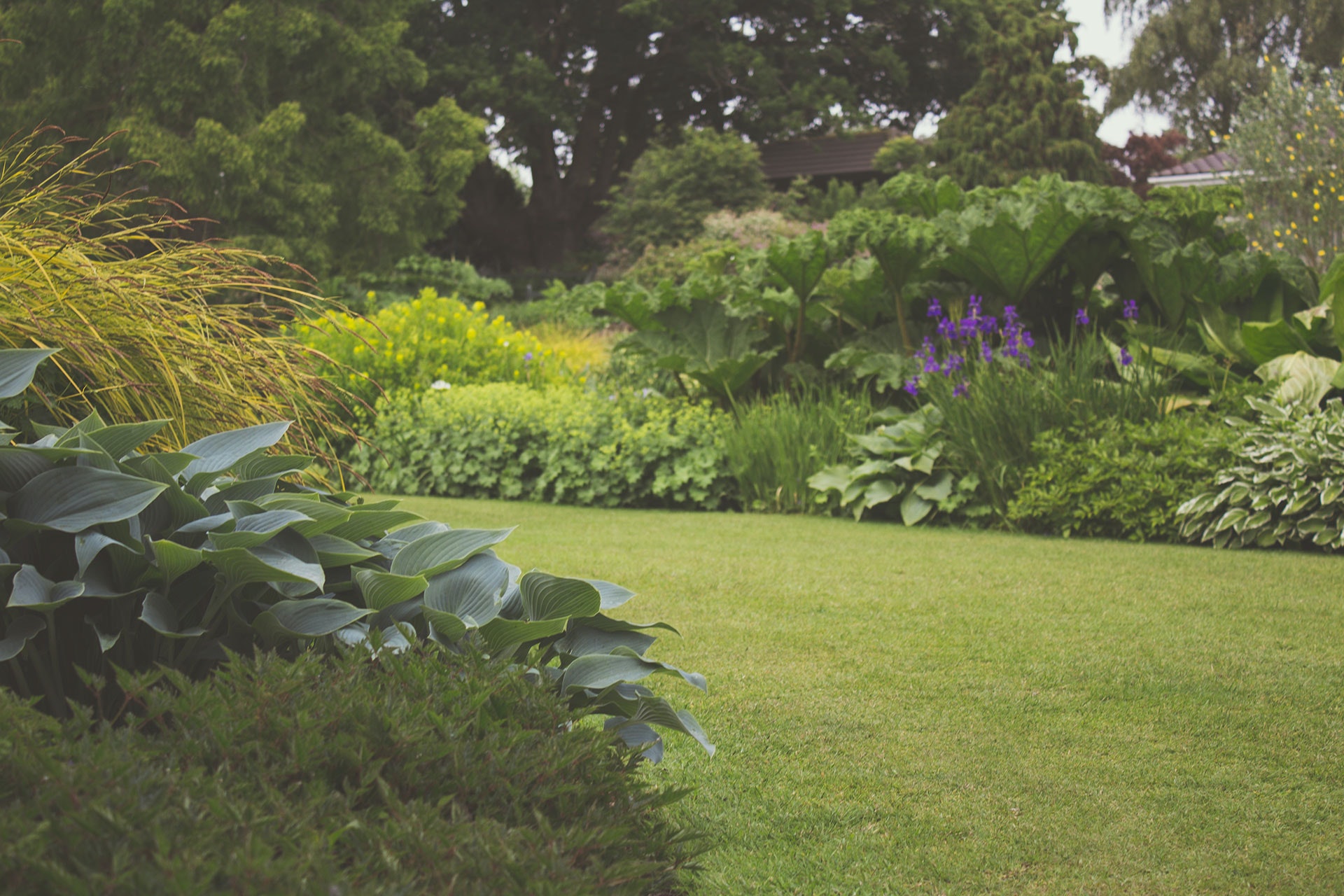
1. Choose your location
Measure out at least 10 feet from your home. Keep your new garden away from septic systems. Find somewhere with a natural downgrade, away from the house, if possible. If your garden is level, then find a place where soil is already absorbing water easily. Stay away from soil that holds moisture for an extended period of time.
2. Create a design
Measure the size and shape of the area. Once you determine what you are working with, you can begin planning what to plant. Plan out what looks best to the eye first, while keeping in mind the plants that do best with wet feet should be in the middle.
3. Choose your plants
Since each region gets a different amount of rainfall, native plants tend to do best. You will want plants that do well in wet and dry conditions. Rainfall will add up occasionally over the year, but the soil can dry out in the warmer months. Choose plants that don’t mind having wet roots for extended periods of time such as blue fescue grass, daylilies, elderberry and tupelo trees. Look for water-resistant natives such as black chokeberry, meadowsweet shrubs, Joe-Pye weed, Colorado blue spruce, bayberry, ferns and winterberry. Check out your local garden center for tips on the best plants for your region.
4. Prepare the soil
As all gardeners know, it starts with the soil. Good drainage is key to prevent water from sitting. If your soil needs a fresh start, or to be amended, add Espoma’s Garden Soil to help set your rain garden up for success. Further improve drainage by using pervious surfaces, edging puddles and creating paths through low-lying areas with sand or stones.
5. Get ready for rain
It’s time to plant! Get your plants in the ground and watered in to stabilize them. Water every other day for two weeks to get it ready for a heavy rainfall and watch your garden grow!
Planning your rain garden will keep your garden running smoothly.
*****
Featured Products:

